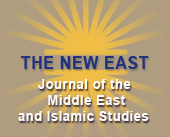From "Political Spring" to "Economic Winter": What Lies Ahead for the Non-Oil Arab States?
Onn Winckler
Since the end of 2010, the non-oil Arab countries have been undergoing tremendous political shifts, which can only be compared to the military revolutions of the 1950s and 1960s. In four Arab countries – Tunisia, Egypt, Libya and Yemen – the old regimes have already collapsed while in Syria, a civil war has been taking place since March 2011. Thus far, the only two non-oil Arab countries where the "old regimes" still survive, without serious civilian protests, are the Jordanian and Moroccan monarchies.
Why did the uprising break out specifically in late 2010 and early 2011? What were the main reasons for this uprising? Are these reasons similar to those which led to the wide-scale civil protests in many Western European countries since the beginning of the global economic recession? What lies ahead for the non-oil Arab economies? The aim of this article is to examine these crucial questions.
The first part of this article examines the changes in the socioeconomic mobility options of the young in the non-oil Arab countries in the period which begins in the 1950s with the ascendancy of the army officers to power in many Arab countries. This period lasted until the end of the "oil decade" (1973-1982), a time when employment mobility options extended to the Arab oil states as well. The article then goes on to examine the years following the end of the "oil decade" during which, on the one hand, the employment options for the young in the non-oil Arab economies were severely limited while, on the other, the number of newcomers to the workforce skyrocketed due to the wide-based population age pyramid of these countries. The third part explores the structural changes which the non-oil Arab economies were forced to implement following the end of the "oil decade" due to the severe economic recession. It then deals with the timing of the outbreak of the "Arab Spring," followed by looking at the severe economic consequences of the "Arab Spring." The final part examines the chances of the non-oil Arab economies regaining rapid economic growth, which constitutes the fundamental condition for achieving political stability.

